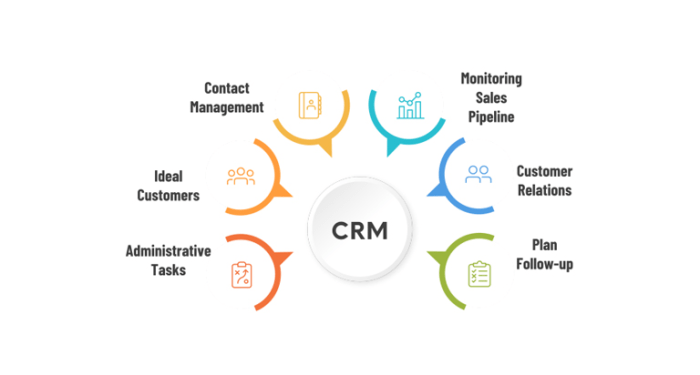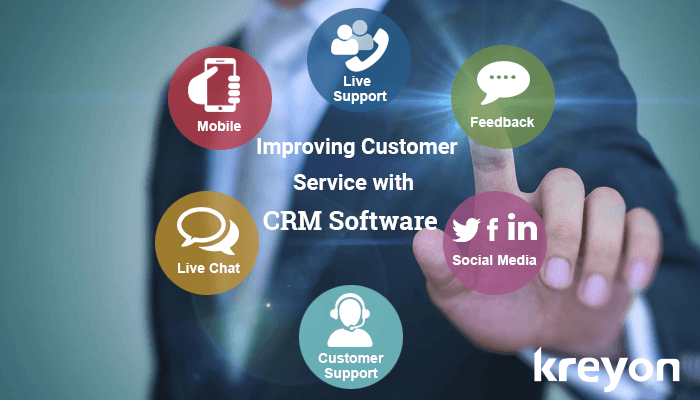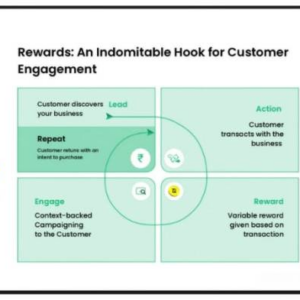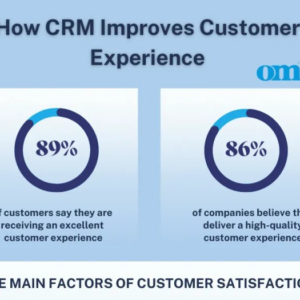How to Maximize CRM for Better Customer Support and Service? It’s the million-dollar question every business owner grapples with. Unlocking the true power of your CRM isn’t just about ticking boxes; it’s about transforming how you interact with customers, boosting satisfaction, and ultimately, driving growth. This guide dives deep into practical strategies, from mastering data organization to leveraging automation and insightful analytics, to show you how to make your CRM a customer service powerhouse.
We’ll cover everything from setting up your system and organizing customer data efficiently to personalizing interactions and tracking key performance indicators (KPIs). Learn how to integrate your CRM with other essential tools, train your team for success, and analyze performance data to continually refine your customer support strategy. Get ready to level up your customer service game!
Understanding Your CRM System
So, you’re ready to supercharge your customer service with a CRM? Awesome! But before diving headfirst into features and integrations, let’s get grounded in the basics. Understanding your CRM system is the first step to truly maximizing its potential. Think of it like learning to drive a race car – you need to know the controls before you can win the race.
A CRM, or Customer Relationship Management system, is essentially a centralized database that stores all your crucial customer information. This isn’t just names and numbers; we’re talking about interaction history, purchase details, support tickets, and even social media engagement. This holistic view empowers your team to deliver personalized, efficient, and ultimately, better customer service.
Core Functionalities of a CRM for Customer Support
The core functionalities of a CRM system relevant to customer support revolve around efficiently managing interactions and improving customer experience. Key features include contact management (organizing and accessing customer information quickly), ticketing systems (tracking and resolving support requests), communication tools (integrating email, chat, and phone interactions), reporting and analytics (measuring key performance indicators), and knowledge bases (providing quick access to solutions and information). A robust CRM will streamline these processes, leading to faster response times and happier customers.
Types of CRM Systems and Their Suitability for Customer Service
CRMs aren’t one-size-fits-all. They come in different flavors, each designed to address specific business needs. Operational CRMs focus on automating tasks and streamlining workflows, ideal for managing daily customer interactions and support tickets. Analytical CRMs, on the other hand, are all about data analysis, helping you identify trends, predict customer behavior, and proactively address potential issues. Collaborative CRMs prioritize teamwork, enabling seamless communication and knowledge sharing amongst your support team. For maximizing customer service, a blended approach, often incorporating elements of all three types, tends to be the most effective. For instance, an operational CRM might handle ticket routing, while an analytical CRM identifies common customer pain points that can then be addressed through improved workflows within the operational system.
Setting Up a Basic CRM System for Efficient Customer Support
Let’s get practical. Setting up a basic CRM doesn’t have to be a Herculean task. Follow these steps for a smooth and efficient implementation:
- Define Your Needs: Before selecting a CRM, clearly define your specific customer support needs. What are your biggest challenges? What data is most crucial to track? This will guide your choice of system and features.
- Choose a CRM: Research and select a CRM that aligns with your budget, team size, and technical capabilities. Many offer free trials, allowing you to test before committing.
- Import Existing Data: If you have existing customer data, import it into your new CRM. Ensure data accuracy and consistency for optimal results.
- Configure Workflows: Set up automated workflows for tasks like ticket routing, notifications, and follow-ups. This ensures consistency and efficiency.
- Train Your Team: Provide comprehensive training to your support team on how to use the CRM effectively. This is crucial for adoption and maximizing its benefits.
- Monitor and Optimize: Regularly monitor your CRM’s performance and make adjustments as needed. Track key metrics to identify areas for improvement.
Remember, the best CRM is the one that works best for *your* business. Don’t be afraid to experiment and find the perfect fit.
Data Management and Organization
Your CRM is only as good as the data within it. A messy, disorganized CRM is a recipe for frustration, missed opportunities, and ultimately, unhappy customers. Effective data management is the cornerstone of successful CRM implementation, allowing you to leverage its power for better customer support and service. Let’s explore how to keep your data clean, accessible, and actionable.
Efficient data organization within your CRM system hinges on establishing clear, consistent processes for data entry, updates, and maintenance. This prevents data silos, ensures accuracy, and allows for seamless retrieval of customer information when needed. Think of it like building a well-organized library – you need a system to easily find the book (customer data) you need, when you need it.
Best Practices for Organizing Customer Data
Implementing consistent data entry and update procedures is key. This involves defining standard fields for all customer records, including crucial details like name, contact information, purchase history, and interaction notes. Avoid creating duplicate entries by implementing data deduplication techniques, which may be built into your CRM or require a third-party tool. Regular data cleansing, such as removing outdated or inaccurate information, should also be part of your routine. This ensures your CRM remains a reliable source of truth. Consider assigning roles and responsibilities for data management to specific team members to maintain accountability and efficiency.
Efficient Data Entry and Update Processes
Leveraging your CRM’s automation features is crucial for minimizing manual data entry. For example, many CRMs allow for automated data import from other systems, such as your e-commerce platform. This reduces the chance of human error and frees up valuable time. Workflow automation can also streamline data updates. Imagine a scenario where a customer updates their address on your website; this change can automatically update their address within the CRM, eliminating manual intervention. Additionally, using pre-defined fields and dropdown menus reduces the likelihood of inconsistent data entry.
Customer Data Segmentation for Personalized Service
Segmenting your customer data allows you to tailor your service based on individual needs and preferences. By analyzing demographics (age, location, etc.), purchase history (frequency, value, product type), and interaction patterns (support tickets, website activity), you can create targeted segments. For example, you might segment customers into “high-value,” “loyal,” “at-risk,” or “new” groups. This enables personalized communication, targeted promotions, and proactive support, significantly improving customer satisfaction.
Example of Organized Customer Data
| CustomerID | Name | Contact Information | Purchase History |
|---|---|---|---|
| 12345 | Jane Doe | [email protected], 555-123-4567 | Product A (2), Product B (1) – Total Spend: $250 |
| 67890 | John Smith | [email protected], 555-987-6543 | Product C (3), Product D (1) – Total Spend: $400 |
| 13579 | Emily Brown | [email protected], 555-246-8013 | Product A (1), Product E (2) – Total Spend: $175 |
Enhancing Customer Interactions
Your CRM isn’t just a database; it’s your secret weapon for building stronger customer relationships. By leveraging its capabilities, you can move beyond reactive support and proactively anticipate customer needs, leading to increased loyalty and higher satisfaction. This means transforming your customer interactions from simple transactions into meaningful engagements.
Personalizing customer interactions isn’t about sending generic emails; it’s about showing your customers you understand them. A CRM allows you to segment your customer base based on various criteria—purchase history, demographics, engagement levels—enabling you to tailor your communication for maximum impact. This targeted approach fosters a sense of value and connection, making customers feel heard and understood.
Personalized Communication Strategies
Effective personalization hinges on using the data within your CRM. Imagine a scenario where a customer frequently purchases running shoes. Your CRM can identify this pattern and trigger an automated email announcing a new running shoe release, offering a personalized discount based on their past purchases. This targeted approach is far more effective than a generic promotional blast. Similarly, birthday emails, anniversary messages related to their account creation, or even proactively offering assistance based on their recent support tickets demonstrates genuine care and understanding. The key is to use the data intelligently and avoid being intrusive.
Automated Responses and Chatbots
Instantaneous responses are crucial in today’s fast-paced world. Automated email responses for common inquiries, such as order tracking or password resets, free up your support team to handle more complex issues. This immediate acknowledgment reassures customers that their concerns are being addressed, improving their overall experience. Chatbots, integrated with your CRM, can further enhance this responsiveness. They can handle simple queries, provide self-service options, and even qualify leads, ensuring that your human agents only deal with the most challenging cases. For example, a chatbot could answer frequently asked questions about shipping times or return policies, freeing up your customer service representatives to focus on resolving more complex problems.
Efficient Customer Inquiry Workflow
An effective workflow is essential for handling customer inquiries swiftly and efficiently. Let’s Artikel a sample workflow:
1. Initial Contact: A customer reaches out via email, phone, or chat. The CRM automatically logs the inquiry, assigning it a unique identifier and recording the initial contact details.
2. Automated Acknowledgment: An automated email confirms receipt of the inquiry and provides an estimated response time.
3. Issue Categorization: The CRM automatically categorizes the inquiry based on s or predefined rules, routing it to the appropriate support agent or department.
4. Agent Response: The assigned agent addresses the inquiry, utilizing the CRM’s integrated knowledge base and customer history to provide a personalized and informed response.
5. Resolution and Follow-up: Once the issue is resolved, the CRM updates the status, records the solution, and can even schedule a follow-up to ensure customer satisfaction. This entire process is tracked within the CRM, providing valuable data for ongoing process improvement. This structured approach guarantees consistency and efficiency, minimizing resolution times and maximizing customer satisfaction.
Tracking and Analyzing Performance

Source: brevitysoftware.com
Unlocking the true power of your CRM isn’t just about inputting data; it’s about understanding what that data tells you. Effective tracking and analysis are the keys to optimizing your customer support and service, turning raw information into actionable insights that boost efficiency and customer satisfaction. By focusing on the right metrics and leveraging your CRM’s reporting tools, you can identify bottlenecks, celebrate successes, and ultimately, build a better customer experience.
Your CRM is a treasure trove of information waiting to be mined. It holds the answers to questions about response times, resolution rates, customer satisfaction, and more. But simply having the data isn’t enough; you need the right tools and strategies to interpret it effectively. This section will guide you through identifying key performance indicators (KPIs), utilizing your CRM’s reporting features, and analyzing the data to pinpoint areas for improvement. Think of it as your roadmap to CRM mastery.
Key Metrics for Measuring CRM Effectiveness, How to Maximize CRM for Better Customer Support and Service
Choosing the right metrics is crucial. Focusing on irrelevant data is like searching for a needle in a haystack – inefficient and ultimately unproductive. Instead, concentrate on KPIs that directly impact customer support and service quality. These metrics provide a clear picture of your performance and help you identify areas needing attention.
- Average First Response Time (AFRT): How quickly are you responding to initial customer inquiries? A shorter AFRT indicates faster, more efficient service.
- Customer Satisfaction (CSAT) Score: This metric, often measured through surveys, reflects how satisfied customers are with your support. A high CSAT score is a sign of excellent service.
- Resolution Rate: What percentage of customer issues are resolved on the first contact? A high resolution rate demonstrates efficient problem-solving.
- Ticket Resolution Time: How long does it take, on average, to resolve a customer issue? Tracking this metric helps identify bottlenecks in your process.
- Customer Churn Rate: This measures the percentage of customers who stop using your services. A high churn rate may signal underlying problems with customer support.
Utilizing CRM Reporting Tools for Performance Tracking
Most CRM systems come equipped with robust reporting tools. These tools allow you to visualize your data, identify trends, and track your progress towards your goals. Learning how to effectively utilize these tools is essential for data-driven decision-making.
For example, you can use your CRM to generate reports showing the average resolution time for different support channels (e.g., email, phone, chat). This allows you to pinpoint areas where response times are particularly slow and allocate resources accordingly. Similarly, you can generate reports on CSAT scores broken down by agent, identifying top performers and those who might need additional training.
Analyzing CRM Data to Identify Areas for Improvement
Data analysis is more than just looking at numbers; it’s about understanding the story they tell. By analyzing your CRM data, you can identify patterns, trends, and areas where your customer support processes can be improved. This involves looking beyond individual metrics and identifying correlations between different data points.
For instance, a high average resolution time combined with a low CSAT score might indicate a problem with the efficiency or effectiveness of your support processes. Analyzing individual customer interactions can reveal specific pain points and areas for improvement in your workflow. Remember, the goal is not just to identify problems, but to understand their root causes.
Actionable Steps to Improve Based on CRM Performance Analysis
Once you’ve identified areas for improvement through data analysis, it’s time to take action. Don’t let your insights gather dust; translate them into concrete steps to optimize your customer support.
- Improve agent training: If your CSAT scores are low, invest in training to improve agent communication and problem-solving skills.
- Optimize workflows: Identify and eliminate bottlenecks in your support processes to reduce resolution times.
- Implement new tools or technologies: Consider using live chat or AI-powered chatbots to improve response times and efficiency.
- Enhance knowledge base: A comprehensive knowledge base can empower customers to self-serve, reducing the burden on your support team.
- Proactive customer outreach: Identify at-risk customers and proactively reach out to address their concerns before they escalate.
Integrating CRM with Other Tools
Unlocking the true potential of your CRM isn’t just about using the software itself; it’s about connecting it to the other tools that power your business. Think of your CRM as the central nervous system – integrating it with other platforms allows for seamless data flow and a significantly more efficient operation. This interconnectedness translates to a smoother, more personalized experience for your customers, leading to increased loyalty and ultimately, a healthier bottom line.
Integrating your CRM with other tools drastically improves workflow efficiency. Imagine manually transferring customer data from your email marketing platform to your CRM, then to your live chat software – a time-consuming and error-prone process. Integration eliminates this tedious manual work, allowing your team to focus on what truly matters: building relationships with customers. This interconnectedness allows for a holistic view of the customer journey, providing valuable insights into customer behavior and preferences.
Streamlined Workflows Through Integration
Integrating your CRM with email marketing platforms like Mailchimp or Constant Contact enables automated email sequences based on customer actions within your CRM. For example, a welcome email can be automatically triggered when a new customer is added to your CRM, while a personalized follow-up email could be sent after a purchase. This level of automation not only saves time but also enhances the customer experience by providing timely and relevant communication. Similarly, integrating with live chat software, such as Intercom or Zendesk, provides your support agents with immediate access to a customer’s complete history within the CRM, enabling them to provide faster and more personalized assistance. Imagine a support agent instantly seeing a customer’s past purchases and interactions – that’s the power of integration.
Seamless Customer Journeys Through Integrated Touchpoints
A seamless customer journey is built on consistent and personalized interactions across all touchpoints. CRM integration plays a crucial role in achieving this. For instance, a customer might initially interact with your brand through a social media advertisement, leading them to your website. Through CRM integration with your website analytics, you can track this interaction and add the customer to your CRM. Subsequently, they might engage with your live chat, and the agent can access their complete history in the CRM, enabling a personalized conversation. Finally, a post-interaction email is automatically sent through your integrated email marketing platform, nurturing the relationship further. This cohesive experience, facilitated by integration, fosters trust and loyalty. Consider a hypothetical scenario: Sarah interacts with your company’s website, adds items to her cart, but doesn’t complete the purchase. Through CRM integration with your website analytics, you’ll know this. Your integrated email marketing platform can then automatically send Sarah a personalized reminder email with a discount code, encouraging her to complete her purchase. This targeted approach is far more effective than generic marketing blasts.
Training and Team Collaboration
Investing in your support team’s CRM proficiency is key to unlocking its full potential. A well-trained team translates to happier customers, improved efficiency, and a stronger bottom line. This section Artikels how to build a robust training program and foster seamless collaboration using your CRM system.
Effective CRM utilization hinges on proper training and collaborative workflows. Without a clear understanding of its features and capabilities, your team won’t be able to leverage the CRM’s power to improve customer service. Moreover, a lack of collaboration can lead to inconsistencies in service delivery and missed opportunities. By investing in comprehensive training and establishing clear communication channels within the CRM, you can ensure a cohesive and efficient support team.
CRM Training Program Development
A comprehensive training program should cover all aspects of the CRM, from basic navigation to advanced features. Start with an overview of the CRM’s interface and core functionalities. Then, delve into specific features relevant to customer support, such as ticket management, knowledge base access, and reporting tools. Hands-on training sessions, using real-life scenarios, are invaluable. Consider role-playing exercises to simulate common customer interactions and provide opportunities for your team to practice their CRM skills. Regular refresher courses and updates on new features are also crucial to maintain proficiency. For instance, a company like Zendesk offers various training resources and certifications to help teams master their platform.
Facilitating Team Collaboration with CRM Features
CRM systems offer various features specifically designed to enhance team collaboration. Shared inboxes allow multiple agents to access and respond to customer inquiries, ensuring no request goes unanswered. Integrated communication tools, such as internal chat or messaging systems, enable quick and efficient communication between team members. Collaborative notes and comments on customer profiles allow team members to share insights and context, leading to more personalized and effective support. For example, a team member might add a note to a customer’s profile indicating their preference for email communication or a past issue they’ve experienced. This ensures consistent and informed service across all interactions.
Best Practices for Team Communication and Knowledge Sharing
Effective communication and knowledge sharing are vital for a cohesive support team. Establish clear communication protocols within the CRM, specifying how and when to use different communication channels. Encourage the use of internal CRM notes to document customer interactions, troubleshooting steps, and relevant information. Regular team meetings, focused on CRM usage and best practices, should be implemented. These meetings offer opportunities to address challenges, share successes, and brainstorm improvements. Creating a centralized knowledge base within the CRM, accessible to all team members, is crucial. This knowledge base can include FAQs, troubleshooting guides, and product information, empowering team members to resolve issues quickly and efficiently. Finally, regularly assess and update your training materials to ensure they remain relevant and effective. Consider using a feedback mechanism to gather input from your team and incorporate their suggestions for improvement.
Case Studies and Best Practices
Mastering CRM isn’t just about implementing software; it’s about strategically leveraging its power to transform customer service. This section dives into real-world examples of successful CRM deployments, showcasing effective strategies and highlighting the tangible benefits achieved. We’ll also explore different implementation approaches, comparing their strengths and weaknesses to help you choose the best path for your business.
Successful CRM implementation isn’t a one-size-fits-all solution. Understanding the nuances of various approaches and learning from the successes (and failures) of others is crucial for maximizing your return on investment. This section provides insights into diverse strategies, allowing you to tailor your approach to your specific business needs and context.
Zendesk’s Implementation at a Tech Startup
Imagine a rapidly growing tech startup struggling to manage customer inquiries across multiple channels – email, social media, and in-app messages. Their initial system was chaotic, leading to delayed responses and frustrated customers. Implementing Zendesk, a cloud-based CRM, dramatically improved their customer support. Zendesk’s features, such as automated ticket routing, integrated knowledge base, and robust reporting dashboards, enabled the startup to streamline their workflow, reduce response times by 40%, and increase customer satisfaction scores by 25%. The key to their success was a thorough initial assessment of their needs, careful user training, and a commitment to continuous improvement, adapting their Zendesk configuration as the company grew. This case study emphasizes the importance of selecting a CRM system that scales with your business and aligns with your evolving needs.
Salesforce’s Use in a Large E-commerce Business
A large e-commerce company faced challenges managing its vast customer base and providing personalized service. They adopted Salesforce Service Cloud, a comprehensive CRM solution known for its scalability and customization options. By leveraging Salesforce’s features, they implemented a sophisticated system for managing customer interactions, including personalized email campaigns, proactive support based on purchase history, and real-time chat support. The integration of Salesforce with their e-commerce platform allowed for seamless data flow, enabling them to provide highly targeted support and improve customer retention. The resulting increase in customer lifetime value showcased the power of a well-integrated and strategically implemented CRM system. This example demonstrates the effectiveness of integrating CRM with existing systems for a holistic approach to customer service.
Comparing Cloud-Based vs. On-Premise CRM Implementations
Choosing between a cloud-based and on-premise CRM solution significantly impacts implementation and ongoing management. Cloud-based solutions, like Salesforce or Zendesk, offer ease of access, scalability, and lower upfront costs. However, they may present concerns regarding data security and customization limitations. On-premise solutions, such as Microsoft Dynamics 365, provide greater control over data and customization options, but require significant upfront investment in hardware and IT infrastructure, along with ongoing maintenance. The optimal choice depends on the organization’s size, technical expertise, budget, and specific requirements. A thorough cost-benefit analysis is crucial for making an informed decision.
Innovative CRM Applications Beyond Basic Support
Beyond standard ticket management, CRM systems can drive significant innovation in customer service. For example, many companies use predictive analytics within their CRM to anticipate customer issues before they arise. By analyzing historical data, they can identify patterns and proactively address potential problems, preventing negative experiences. Another example is the use of CRM data to personalize customer interactions, tailoring communication and support based on individual preferences and past interactions. This level of personalization fosters stronger customer relationships and increases loyalty. The use of AI-powered chatbots within the CRM system can handle routine inquiries, freeing up human agents to focus on more complex issues, leading to increased efficiency and improved customer satisfaction. These innovative applications highlight the evolving role of CRM in providing exceptional customer experiences.
End of Discussion: How To Maximize CRM For Better Customer Support And Service

Source: kreyonsystems.com
Mastering your CRM isn’t a destination, it’s a journey of continuous improvement. By implementing the strategies Artikeld above – from optimizing data management to leveraging automation and insightful analytics – you’ll not only elevate your customer support but also foster stronger, more profitable relationships. Remember, a well-oiled CRM machine isn’t just about efficiency; it’s about creating a truly exceptional customer experience that keeps them coming back for more. So, ditch the outdated methods and embrace the power of a maximized CRM – your customers (and your bottom line) will thank you.


